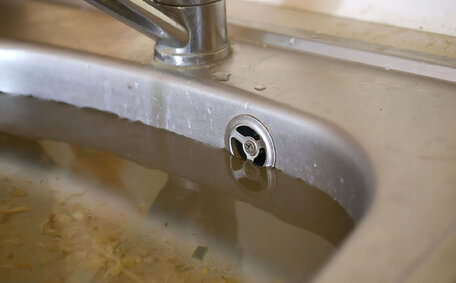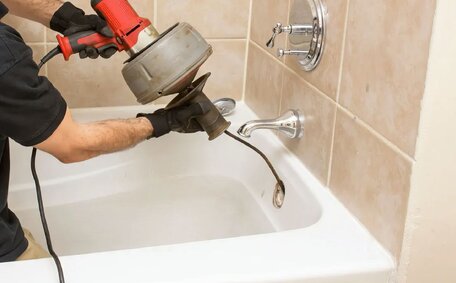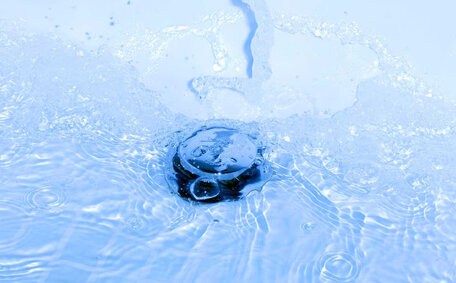Introduction to Smart Water Leak Detection
Homeowners and businesses now benefit from revolutionary leak detection technology, thanks to the integration of smart technology. Utilising the latest Internet of Things (IoT) devices and Artificial Intelligence (AI), Hornsby Plumbing offers real-time leak monitoring to prevent significant damage from hidden water leaks.
Contemporary water systems fitted with leak detection sensors immediately identify leaks via flow rate monitoring and machine learning analysis. Upon leak detection, your phone receives an instant alert, allowing swift action to prevent major flooding.
Some key benefits of smart water leakage detection include:
- Early detection reduces water waste and cuts down on utility costs
- Preventing leaks protects your home/property from water damage
- Enables proactive maintenance of the water system
- Enhances peace of mind and decreases the likelihood of insurance claims
In areas with leakage rates over 20%, like England and Wales, smart technologies present comprehensive solutions for water network challenges. With real-time monitoring capabilities and intelligent data analysis, they outperform traditional detection solutions.
At Hornsby Plumbing, we can help you implement the latest water leak detection systems tailored to your needs. Our skilled team carries out detailed leak detection surveys, ensuring that we leverage the latest innovations for superior plumbing services. Contact us today to find out more about fortifying your plumbing network against water misfortunes.
How Do Smart Water Leaks Sensors Work?
Moen Smart water leak sensors and printed sensors function by persistently monitoring plumbing systems for abnormal flow, identifying leaks in real-time. Here is a concise overview of their detection functionality:
- Sensors are installed at critical points in the plumbing network - on water line, near appliances like washing machines, and at pipe joints prone to leaks.
- These sensors monitor the water flow rate, pressure changes, temperature, humidity, and more to create a detailed profile of your water usage patterns.
- You can use machine learning algorithms, where sensor data is analysed for anomalies indicative of a leak. This acts as an early warning system.
- On detecting a potential leak, homeowners receive real-time alerts through mobile push notifications or alarm systems.
- The homeowner can then promptly investigate, confirm the leak detected, and contact a plumber to fix it before catastrophic flooding and water wastage occurs.
State-of-the-art sensors use IoT connectivity to send real-time data to the cloud for analysis. This enables intelligence AI-driven leak detection capabilities. Historical data about home water flow rates can also be used to improve accuracy over time.
Essential attributes of smart leak detection sensors capable of water monitoring include:
- Easy DIY installation - no plumbing changes needed.
- Battery or AC powered options.
- Continuous sensing technology and analysis.
- Instant leak alerts to minimise damage.
- Integrates with smart home platforms.
- Some variants can automatically halt water supply if needed.
Innovative smart sensor cables significantly advance home leak detection technology.
No longer do you need to wait for a leak to become visible before finding it. With smart sensors, they detect even small leaks hidden behind walls or under sinks, catching them early through the water leakage detection system. Contact our team at Hornsby Plumbing to learn more about installing smart leak detection in your home.
Types of Smart Leak Detection Devices
Today, there are three types of smart water devices designed to identify leaks in homes and buildings:
Humidity sensors
Humidity sensors track ambient levels, identifying leaks upon detecting unusually high humidity. Install water leak detectors in areas susceptible to leaks, such as under sinks, behind toilets, and near hot water systems.
Water sensor alarms
Water sensor alarms have probes placed in locations at risk of water accumulation from leaks. When leak detection water contacts the probes, an audible alarm is triggered to alert homeowners.
Smart water metres
Smart water meters equipped with sophisticated detection technology monitor water usage in real time. Sudden spikes in flow rates are indicative of a leak and can generate alerts for prompt leak detection.
Flow rate sensors
Flow rate sensors constantly measure water flow, adjusting to the various water condition changes. Deviations from normal baselines are scrutinised by AI algorithms to pinpoint potential leaks.
Pipe pressure sensors
Thermal imaging employed to measure pipe pressure can reveal drops, indicating fractures and potential water escape. Helpful for underground leaks that may not show water pooling.
Smart leak detection combines these sensor data points with connectivity and intelligent analysis for automated and early leak alerts. Contact our Hornsby Plumbing team to find out more about installing smart leak detection tailored to your residential or commercial property.
Ideal Placement for Smart Leak Detectors
When it comes to the ideal placement of water leak detectors, strategic location is key for rapid detection of potential water leakages. Here are some tips on where to install detectors for optimal leak protection:
Under sinks
One of the most common sources of leaks is under kitchen and bathroom sinks due to the presence of supply lines and plumbing connections. Installing detectors here allows early detection before leaks spread.
Near water heaters
Leaks from water heaters can go unnoticed until a water leak sensor signals a major flooding risk. A strategically placed leak sensor around the tank provides an alert at the first sign of a leak.
Pipe joints
Fittings and joints in pipes are prone to loosening over time. When comes to precision, detectors placed near joints will identify the exact origin of leaks as they start.
Appliances
Washing machines, dishwashers and refrigerators with ice makers all have water connections that can leak. Detectors around these appliances prevent unnoticed leaks.
Floor drainage points
By a home’s floor drains or the lowest points along the perimeter, detectors can find where leak anywhere in the system by identifying water accumulation.
Near pumps
Sump pumps, well pumps and pressure pumps should have detection water sensors to find both equipment and pipe leaks.
Yard hydrants
Placing detectors close to outdoor faucets and hydrants averts leaks that might go undetected, causing substantial property damage.
With strategic placement guided by locations prone to leaks, smart detectors provide complete coverage of potential problem areas. Contact our experts at Hornsby Plumbing to have detectors professionally installed for comprehensive leak protection.
Monitoring Water Usage with Smart Sensors
Smart water sensor technology enables households and businesses to closely monitor for possible pipeline leaks by tracking water usage and detecting anomalies indicative of leaks. Utilising smart water monitors can curtail excessive water use by tracking flow rates and consumption patterns, these sensors contribute to water management by providing valuable leakage detection data including:
- Real-time updates on water flow through pipes.
- Notifications when unusual flow spikes occur outside normal usage.
- Insights into peak water usage times.
- Abnormal flow rates that assist in the detection location of potential leaks.
- Long term water usage trends and analysis.
Monitoring water usage empowers residential and commercial property managers, owners, and water companies to:
- Identify areas of over-consumption and improve water efficiency.
- Receive automated alerts for leak detection to prevent water wastage.
- Better predict water supply demands for improved resource planning.
- Identify equipment faults based on unusual water usage.
Designed for seamless installation and integration with smart home water systems, smart sensors provide a convenient monitoring solution for water distribution networks. They help conserve water, reduce bills, and provide peace of mind against expensive and damaging leaks. Hornsby Plumbing can advise on the ideal sensors and monitoring options for your property’s needs.
Getting Alerts for Pipe Bursts and Leaks
Smart leak detection systems provide instant notifications when they detect pipe bursts or leaks, enabling rapid response. Many systems promptly send mobile push notifications to homeowners when leaks or unusual water flow are detected.
This real-time alert capability is critical to minimise water wastage and prevent damage. Even minor hairline cracks in pipes can lead to significant water leakage over time. Smart technology helps catch these leaks early before they become catastrophic pipe bursts.
The instant alerts provide peace of mind, ensuring homeowners can take swift action as soon as a leak is detected. Some systems can even automatically institute a smart water shutoff valve when critically large leaks are identified, stopping the escaping water immediately.
By getting real-time information and alerts, costs and property damage can be significantly reduced. 24/7 monitoring capabilities of smart leak detectors ensure leaks are caught whether homeowners are present or away.
At Hornsby Plumbing, we advocate for smart buildings by recommending the integration of your smart leak detection system with your other smart home devices. This way, pipe bursts and leaks can trigger events like turning on flood lights, adjusting smart sprinklers, or activating a water shutoff valve.
Our team can set up these automations for seamless control and responsiveness when leaks occur in your plumbing system. Contact us today to learn more about prompt leak alerts.
Integrating with Building Management Systems
A smart building leak detection system can be seamlessly integrated with broader building management systems (BMS) to enable enhanced monitoring and control across a property. There are several key benefits to integrating leak detection capabilities into a BMS:
- Centralised monitoring - Leak alerts are manageable through a BMS dashboard, enhancing water loss control with other building operations.
- Automated responses - The detection of a leak can trigger automated actions through the BMS like closing valves to isolate the leak or adjusting HVAC systems if needed.
- Improved maintenance - Leak data helps identify recurring problem areas to optimise future maintenance and repairs.
- Water usage analytics - The BMS’s analysis of leaks, consumption patterns, and related factors such as occupancy offers critical insights.
- Remote access - Proprietors can obtain alerts and real-time leak data remotely via the BMS.
Facilities management is streamlined by connecting smart leak detectors to the main BMS network and configuring monitoring dashboards and response rules. The detectors act as IoT (Internet of Things) sensors that feed data to the system for analysis and action.
At Hornsby Plumbing, we can handle the full integration of smart leak detection devices into new or existing building management systems. Our experts will ensure seamless connectivity and setup for comprehensive monitoring and control. Contact us today to learn more about BMS integration options to protect your building from water damage.
Analyzing Leak Data for Predictive Maintenance
Smart leak detection devices gather data that offers insights for predictive maintenance and proactive leak prevention.
These devices compile informative datasets by consistently monitoring water flow rates, pressure, temperature, and usage patterns. Advanced analytics and smart home water AI algorithms can then identify trends and abnormalities that allow for predictive maintenance.
Some key ways leak data enables predictive maintenance:
- Detecting slight increases in flow rates pinpoints areas at risk of future leaks.
- Identifying anomalies allows inspection of affected areas to find leaks in early stages.
- Analysis determines high-risk equipment like valves and joints that require preventative repair.
- Tracking usage profiles and treated water levels over time aids in scheduling proactive maintenance for low-demand periods.
- Insights into leak causes like pressure spikes allow addressing root problems to prevent recurrence.
Hornsby Plumbing stays up-to-date on the latest analytics techniques to derive actionable insights from smart leak data. Predictive maintenance through our smart leak detection systems provide an efficient, cost-saving approach for minimising water wastage.
Our team is here to help implement a customised solution tailored to your needs. Contact us today to learn more about predictive maintenance options to protect your plumbing network.
>
Identifying anomalies allows inspection of affected areas to find leaks in early stages.Challenges and Limitations of Smart Leak Sensors
Although smart leak sensors offer valuable real-time monitoring and prompt detection capabilities, there are challenges to be aware of:
Installation dead spots
Sensors have limited coverage ranges and can only monitor portions of plumbing systems from a single device. Strategic placement is needed to avoid detection blind spots.
Power requirements
Most wifi water sensor setups require nearby power outlets or battery replacement. Outages or low batteries can lead to gaps in monitoring.
Connectivity failures
Leak detectors relying on wifi water connectivity or LTE can lose connectivity leading to data and alert transmission failures.
False positives
Incorrect leak alerts may occur due to events like power fluctuations and water usage spikes. Adjustable sensitivity helps minimise false alarms.
Maintenance needs
Smart flood sensors must be periodically checked for calibration and performance to ensure reliable leak detection.
However, regular enhancements in battery life, connectivity, and data analytics are helping overcome these limitations. Dual sensor monitoring, sometimes with fiber optic technology, is also used to validate leak alerts and reduce false alarms. Contact our Hornsby Plumbing team to learn more about maximising the performance of your smart leak sensors.
Conclusion and Summary
Smart technology brings crucial capabilities for detecting water leaks and averting severe damage. Internet of Things sensors provide real-time monitoring to identify leaks at the earliest stages, while advanced analytics enable predictive maintenance.
As demonstrated throughout this article, smart leak detection delivers multiple benefits: minimising water wastage, reducing utility bills, avoiding property damage, and gaining insights into usage patterns. Despite potential limitations like connectivity and false alarms, the technology continues to rapidly evolve with solutions like dual monitoring and adjustable sensitivity.
Homeowners and businesses seeking a proactive approach to leak prevention should strongly consider implementing these cutting-edge systems. At Hornsby Plumbing, our team specialises in smart leak detection tailored to your unique needs. Contact us today at 1300 349 338 or [email protected] to learn more about securing your plumbing network against leaks.
Partnering with industry experts ensures smart city planners capitalise on the power of smart technology for efficient water usage in their initiatives. Reduce your risks, safeguard your property, and gain valuable peace of mind with advanced leak detection from Hornsby Plumbing.






